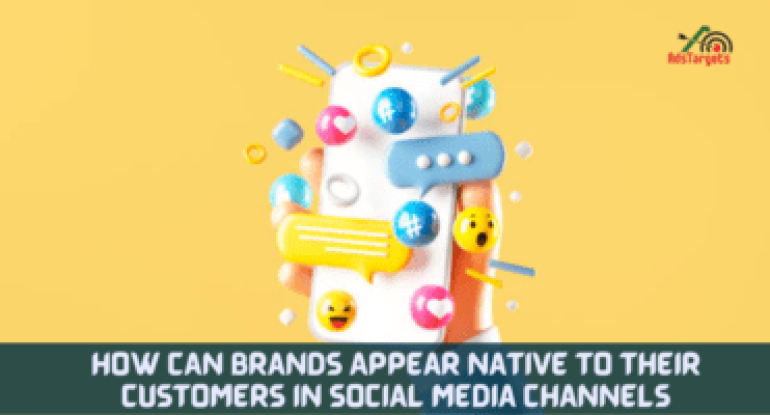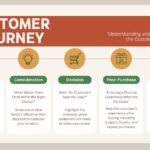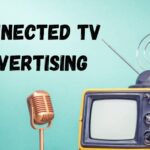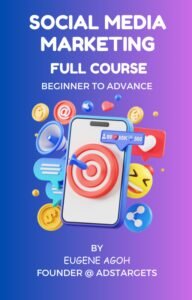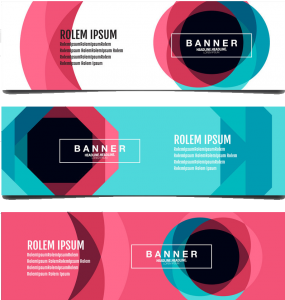Updated 24/03/2025
It is not coming to you as news when I say here that daily consumers are bombarded with ads from numerous businesses.
This has led to two worrisome predicaments for advertisers:
One is that ad blocking has been increasing through the years as more and more people actively avoid ads.
And the second is that people’s habits are changing as they automatically turn a blind eye to ads – a phenomenon called “banner blindness.”
Tuning out the “noise” is increasingly becoming instinctual. And now the Internet gods have decreed that “no more shall thou bombard thy customer with ads” with Google Chrome and Safari now actively blocking particularly disturbing types of ads.
The only way out of this conundrum is for brands advertising on social media to make their ads appear native to their customers.
It means the way to win with social media advertising is to create ads that consumers want to see.
So what exactly is native advertising and how can brands leverage them to make their ads appear native to their customers? This article carries the answers to these questions, continue reading to find out.
Table of Contents
ToggleWhat Is Native Advertising?
Native advertising is a form of paid advertising in which the ads look, feel, and function like the media source where they appear.
This type of ad fuses seamlessly with the surrounding content it doesn’t look like a paid ad at all. This format is perfect for building audience engagement and brand visibility for not just advertisers, but also publishers.
In contrast to banner ads, native ads don’t look like real ads. They appear to be an element of the page’s editorial flow. It is non-disruptive and it exposes the viewer to promotional content without hitting the thumb.

How to Use Native Advertising On Social Media Channels
#1. Instagram Sponsored content
Sponsored photos and videos on Instagram can be an effective way to connect with your target customer.
A huge 1.32 million active users can be reached by advertising on Instagram, making it an excellent choice to extol the virtues of your brand.
Instagram users have also shown to be receptive to advertising, 90% of the platform’s users follow at least one brand on Instagram, showing that there is already receptiveness to hearing from, and connecting with brand messaging.
Research has found that users are 10 times as likely to engage with brands on Instagram 10 times more than they are on Facebook.
So, how do you reach and engage customers on Instagram in a native format? There are two basic ways to sponsor content on Instagram: via the platform itself in the form of promoted content or by partnering with influencers via paid sponsorships.
Promoted content look and feel like everything else on Instagram but will clearly be labeled as sponsored content.
Brands can leverage Reels, Stories, Instagram Videos, or Feed Video to put their stories in front of prospects using Instagram.
Whichever form the ad takes, the idea is to present the sponsored post in a way users already know and enjoy.
Instagram has effective advertiser tools that enable various ways to define and target a prospect. These ads can be created, targeted, and twitched in Meta’s Ad Manager, the same platform used for sponsored articles on Facebook.
#2. Collaborating with Instagram influencers
Paid sponsorships on Instagram lean on the popularity of creators to reach new markets. In this form of native advertising, brands collaborate with influencers to promote their goods from the creator’s own account.
This type of branded post will look similar to the influencer’s regular content but will include a paid partnership tag – i.e. the line “Paid partnership with [Brand Name] will be displayed below the creator’s handle.
To get a clearer understanding of how this works, let’s take a look at an example. When fast food giant McDonald’s was looking for a means to connect with a younger audience in Denmark, it partnered with Anders Hemmingsen, a popular Danish influencer with one of the country’s most followed Instagram accounts.
Hemmingsen’s profile is based on user-generated content, and the plan was to host a SoMe award show on his Instagram page, co-presented by McDonald’s.
To say it was a success would be an understatement. The campaign generated over 9 million impressions, half a million votes, and over 30,000 clicks on the McDonald’s app, which was over 300% above the benchmark.

#3. Facebook Sponsored Ads and Posts
A Facebook-sponsored post is a post that brands pay for to reach a larger audience than they otherwise would be able to organically.
A Facebook sponsored post is almost completely like an ordinary post in appearance, as it looks just the same as all other content inside a user’s feed; the only difference is that sponsored content is labeled as such.
It is typically a normal organic post that you pay to ‘boost’ to reach an audience outside of the people already following your brand on Facebook.
It can take the form of a link to an article, a text post, a video, a photo, or even a live stream. In short, if you can publish it to Facebook, you can also boost it.
With organic reach on the platform on a sharp decline, it has become increasingly crucial for brands to leverage paid content to boost the visibility of their Facebook business pages.
#4. Native advertising on TikTok
TikTok is a complete juggernaut, especially when it comes to targeting younger audiences. Exactly how many users advertisers can reach on the platform is hard to say with certainty but it is a lot.
According to the platform, there are about 1.53 billion TikTok users globally and one billion of those are monthly active users.
The company says that brands could reach 1.051 billion users aged 18 and above on TikTok as of January 2023 but TikTok only reports advertising audience data for users aged 18 and above in some countries but allows those 13 and above to use the platform.
TikTok’s advertising tool is similar to Meta’s so those already placing ads on Facebook and Instagram will find TikTok fairly straightforward.
TikTok’s ad tools allow brands to target relevant segments, select specific ad placements and plan the scheduling and budgets of their ads on multiple levels.
TikTok offers numerous ad formats such as TopViews, Hashtag Challenges, Brand Takeovers, and Branded Effects.
Aside from these ad formats, TikTok also has the In-Feeds Ads format and Spark Ads, a format specially made for native advertising and one that allows brands to use user-generated content.
#5. Sponsored updates on LinkedIn
With a sponsored update on LinkedIn, your brand can easily promote any content to a targeted audience’s feed.
It’s an effective way to expand your reach and connect with new audiences and is especially powerful in B2B marketing.
Sponsored LinkedIn content can be a single image, carousel, video, job listing, or event ad. The content will look just like LinkedIn’s regular content except for a ‘Promoted’ label.
LinkedIn has a lot of data on the users’ jobs, locations, titles, education levels, and companies, which all make for good filtering when selecting your audience.
Sponsored content can be created, targeted, and measured via the LinkedIn Audience Network, a great tool for B2B marketers.
With a sponsored update on LinkedIn, you might not attract as much traffic as on other social media channels, but you will get highly qualified traffic.
#6. Twitter Promoted tweets
Promoted Ads on Twitter can enable you to grow the reach of your content, by presenting your best content to your audience as well as people who aren’t following you yet.
When creating your promoted tweet, you can choose an existing tweet to promote or create a new one with a defined, promotional purpose in mind.
The promoted tweet will appear on a user’s timeline on any device if Twitter considers the tweet relevant to the user.
The tweet itself can be text-only or include videos or images. Leverage the promoted tweet in whatever form that makes sense to you, but if it is part of a native advertising campaign, remember to promote content rather than offers, deals, or discounts.
Whatever the Promoted Ad contains, it’s going to look precisely like a normal tweet except for the ‘Promoted’ label, and you can use it to drive web traffic and leads as well as offer deals or promote sales.

These can be placed in the audience’s timelines, user profiles, search results pages, and, more recently, even with the replies to other Twitter audiences’ tweets.
To address the jumbo-sized blue bird in the room, advertising on Twitter has been a bit of a different beast since Elon Musk took over the platform in 2022.
Many advertisers, including 50 of Twitter’s top 100 advertisers, paused their campaigns on the platform and a flood of “irrelevant and annoying ads” (in Musk’s own words) have filled the void.
But there is no telling what the future holds for the platform. As of January 2023, Twitter had about 556 million users still an enormous audience for native advertisers. Twitter has proven its effectiveness in the advertising space before and it is far too early to consider writing it off completely in the advertising world.
13 Reasons Why Native Advertising Matter?
If you’re sleeping on native advertising, you’re leaving serious engagement and conversions on the table. Unlike old-school banner ads that scream “buy this,” native ads blend right into the content people are already consuming. They don’t interrupt the user experience—they flow with it, making them more effective, engaging, and trust-building.
So why does native advertising work so well? Let’s break it down:
#1. People Actually Trust Native Ads
Nobody likes pushy ads that disrupt their scrolling. That’s why native advertising wins—because it doesn’t feel like an ad. These ads look and behave like organic posts, making them less intrusive and more credible. The proof? 75% of consumers trust native ads more than traditional advertising.
#2. It’s a Brand Awareness Machine
Want more people to recognize your brand? Native ads crush it. Studies show they increase brand awareness more than other marketing strategies. The reason? They’re versatile—you can go emotional, educational, or entertaining. And since they use videos and images, they tap into visual engagement, making them way more memorable.
#3. Native Ads Blend Right In
The key to native advertising is seamless integration. These ads match the look and feel of the platform they’re on—whether it’s a news site, a social media feed, or a blog. They don’t scream for attention like banner ads, which most users ignore anyway. Instead, they quietly work their magic, blending into the content people already want to see.
#4. You’ve Got Endless Creative Options
No cookie-cutter formats here—native ads come in all shapes and sizes. You can run:
✔ Videos
✔ Carousels
✔ Mobile app installs
✔ Click-to-watch ads
✔ Search ads (Yep, even Google search ads count as native advertising!)
Whatever your business, audience, or platform, there’s a native ad format that fits.
#5. They Convert Better Than Regular Ads
Let’s talk numbers:
✅ Higher click-through rates (CTR) than display ads
✅ 18% better purchase intent than banner ads
✅ Users engage more because the ads actually align with their interests
Banner ads get ignored. Native ads get clicked. Simple as that.
#6. Gen Z & Millennials Love Them
Younger audiences hate traditional ads—but native advertising? They’re cool with that. Over 56% of Gen Z, Millennials, and even Gen X prefer native ads because they feel like real content instead of sales pitches.
Pair native ads with influencer marketing and boosted posts, and you’ve got a winning combo that keeps younger audiences hooked and engaged.
#7. People Actually Share Native Ads
When’s the last time you shared a banner ad? Yeah, never. But 32% of people say they’ve shared a native ad with family or friends.
Why? Because these ads don’t feel like ads—they feel like useful, entertaining, or insightful content. And if people share your ad, that’s free exposure.
#8. Native Advertising + Organic Marketing = Power Couple
Smart brands don’t just rely on paid ads—they mix organic and paid strategies for max impact. Native ads fit right into this blend.
🔹 A well-placed native ad grabs attention.
🔹 The user clicks and dives into your organic content.
🔹 They stick around, engage, and eventually convert.
It’s a smooth, non-pushy way to move people down the funnel.
#9. They Get Higher CTRs (When Done Right)
Want more clicks? Native ads deliver. Since they blend in naturally, they attract more genuine engagement. But don’t just throw up any ad—your content still needs:
🎯 A solid hook
🎯 A clear message
🎯 Eye-catching visuals
Time-sensitive offers and seasonal ads can boost CTRs even more—think holiday sales, limited-time discounts, or trending topics.
#10. You Can Target Every Stage of the Funnel
Unlike traditional ads, native advertising works at every level of the sales funnel.
✔ Awareness Stage → Solve a problem with useful content.
✔ Consideration Stage → Educate users on why your brand is the best choice.
✔ Decision Stage → Push retargeting ads to seal the deal.
Bonus? Retention rates for brands using native ads are 3x higher than those relying on traditional ads.
#11. Native Ads Hold Attention Longer
Getting clicks is one thing—keeping attention is another. Good news:
✅ Engagement rates for native ads are 20%-60% higher than banner ads.
✅ People watch native video ads longer than other ad types.
If your content is entertaining, educational, or interactive—like polls, quizzes, or behind-the-scenes clips—people won’t just watch… they’ll engage and remember your brand.
#12. More Engagement = More Conversions
More clicks + more engagement = more sales. But here’s the kicker:
🔹 Rich media (videos, GIFs, animations) boost conversions by 60%.
🔹 Carousel video ads get 2.33% engagement rates, way higher than standard image ads (1.74%).
If you’re selling fashion, beauty, or lifestyle products, carousels and video ads are your best bet for higher conversions.
#13. Publishers Love Native Ads Too
It’s not just brands benefiting from native advertising—publishers love them too.
Why? Because bad ads hurt their websites. Pop-ups, intrusive banners, and annoying autoplay videos make people bounce. But native ads blend into their content, keeping readers happy while still making money.
If you’re still stuck on banner ads, it’s time for an upgrade. Native advertising is the future—it’s trustworthy, engaging, and way more effective than old-school ad formats.
#1. Blends seamlessly into content
#2. Boosts brand awareness & trust
#3. Targets the right audience without being annoying
#4. Works at every stage of the sales funnel
#5. Gets higher CTRs & conversions
Bottom line? If you want ads that actually work, go native.
Conclusion
Native content is the lifeblood of the big social media channels. Giant Social platforms like Facebook and Instagram want to keep growing while keeping their existing user base.
They don’t want to exclude brands (their paying customers) from the conversations, but they also understand that too many sales pitches will send users to other platforms.
That’s why social media giants enable functionalities that allow brands to publish content that appear native to their customers to encourage users to consume that content without leaving the site.
Is your brand blindly posting to the major social media channels without seeing any engagement? It could be your ads are not appearing native but are salesy and customers have learned to avoid such content when they come across them.
In this article, I have walked you through how brands can appear native to their customers on social media channels; I hope this shed all the light you need to walk the road.

